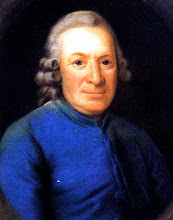Yin (陰 or 阴 "shady place, north slope, south bank (river); cloudy, overcast"; Japanese: in or on; Korean: 음, Vietnamese: âm) qualities are characterized as soft, slow, substantial, water, cold, conserving, tranquil, gentle, and corresponds to the night.Dopamine is Yang while Serotonin is Yin
Yang (陽 or 阳 "sunny place, south slope, north bank (river), sunshine"; Japanese: yō; Korean: 양, Vietnamese: dương) qualities are characterized as hot, fire, restless, hard, dry, excitement, non-substantial, rapidity, and corresponds to the day.
DA and 5-HT have been antipodal in their activities for more than a billion years. Here, for example, the prostostomes, who according to Dawkins, went their particular way and parted from us 500M years ago are using the monoamines to decide whether to move or not.
The effect of dopamine on [snail] command neurons is significantly reduced in the presence of serotonin. In the presence of dopamine, the efficacy of serotonin action on the size of the response elicited in command neurons is reduced. Based on the data obtained, it was concluded that the interrelation of dopamine and serotonin concentrations could be the basis for the formation of behavioral choice in snailsDopamine is the Reward Neurotransmitter
When the cortex has received and processed a sensory stimulus indicating a reward, it sends a signal announcing this reward to a particular part of the midbrain–the ventral tegmental area (VTA)–whose activity then increases. The VTA then releases dopamine not only into the nucleus accumbens, but also into the septum, the amygdala, and the prefrontal cortex.The nucleus accumbens then activates the individual’s motor functions, while the prefrontal cortex focuses his or her attention.But Serotonin inhibits Reward and Stops Excessive Behavior
These regions are connected by what is called the pleasure or reward bundle. In neuroanatomical terms, this bundle is part of the medial forebrain bundle (MFB), whose activation leads to the repetition of the gratifying action to strengthen the associated pathways in the brain.
First described by James Olds and Peter Milner in the early 1960s, the MFB is a bundle of axons that originates in the reticular formation, crosses the ventral tegmental area, passes through the lateral hypothalamus, and continues into the nucleus accumbens as well as the amygdala, the septum, and the prefrontal cortex.
The MFB is composed of ascending and descending pathways, including most of the pathways that use monoamines as a neurotransmitter. The mesocorticolimbic dopaminergic system is one of its main components.
Serotonin plays a major role in the behavioural inhibition system (BIS).
This system was identified by Henri Laborit in the early 1970s. It is associated with the septo-hippocampal system, the amygdala, and the basal nuclei. It receives inputs from the prefrontal cortex and transmits its outputs via the noradrenergic fibres of the locus coeruleus and the serotininergic fibres of the medial Raphe nuclei.
The BIS is activated when both fight and flight seem impossible and the only remaining behavioural option is to submit passively. The pathological consequences of this behavioural inhibition have provided an understanding of how destructive chronic stress can be to people’s health.
Substantial evidence suggests that the functional status of the mesocorticolimbic dopamine (DA) system originating in the ventral tegmental area is under a phasic and tonic inhibitory control by the 5-HT system that acts by stimulating 5-HT(2C) receptor subtypes. Serotonin within the nucleus accumbens may play an important role in mediating incentive motivation by modulating dopaminergic neurotransmission.
Several hypotheses regarding physiopathology of major psychiatric diseases exist. Attention has been focused on cerebral monoaminergic systems, the dysfunction of which is thought to underlie various aspects of their symptomatology. There are reports describing the involvement of serotonergic and dopaminergic systems in the mechanism of action of psychotropic drugs. This article reviews current knowledge on interaction between 5-hydroxytryptamine (5-HT), acting at 5-HT2C receptors in the central dopamine (DA) systems. Since 90s, a growing body of behavioural, neurochemical and electrophysiological evidence from animal studies have demonstrated a clear role for 5-HT2C receptors in modulation of activity of dopamine neurones.
The blockade of serotonin receptors potentiates behavioral effects of dopamine agonists. It is concluded that central serotonin may play an inhibitory role, antagonistic to that of catecholamines
Increasing 5-HT activity in the nucleus accumbens inhibits dopamine-dependent behaviour, and further indicate that activation of 5-HT(1B) receptors is particularly important in this regard
T helper cell I and II Duality of the Immune System are under the Control of Dopamine and Serotonin
Devoino wrote seminal articles in the early 1980s that dealt with the monoamines regulation of the immune system. She wrote prior to the discovery of the T helper cell and its differentiation into Th1 and Th2 subsets. However, interpolating her articles forward she was clearly stating that DA promotes Th1 and suppresses Th2 cytokines and serotonin does the converse. She wrote in 1984:
The monoamine systems take part in the mechanisms of immunomodulation: the dopaminergic one accelerates and the serotoninergic system inhibits the development of immune response, the final result being determined by their interaction.The combined use of a combined dopamine and serotonin agonist protocol (CODAS) such as PURSOR can titrate DA and serotonin into sufficiency and balance and remit addictive craving and immune disorders.





1 comment:
nice blog. have i got this relation straight?
1. sugar - yin - da
2. bitter - yang - 5ht
so dopamine is yin or yang?
-
Post a Comment